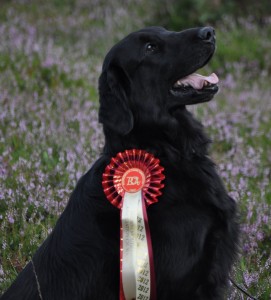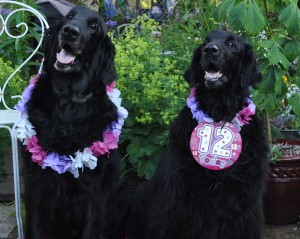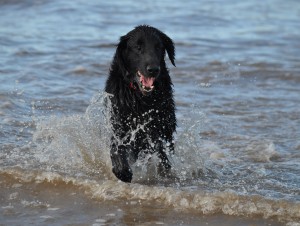Betty’s facelift
Meet Betty the lovely Bassett Hound. Betty is 3 years of age and as you can see from the photog..
+ Read moreTrigger had led a very flamboyant and busy life from the dizzy heights of Crufts to enjoying his romps through the Staffordshire countryside. At 11 years of age, this Flat Coat Retriever had no plans to retire or adopt a sedentary life style. Trigger was still very exuberant in nature, wanting to take part in family activities. However, Trigger’s owners had become increasingly aware and concerned that Trigger’s breathing was becoming loud and rasping. Things culminated, when Trigger became very distressed and collapsed on a warm summers day. Veterinary surgeon Marita McKeown at the PDSA in Stoke on Trent, immediately recognized the clinical signs and diagnosed laryngeal paralysis.
The treatment of choice for those patients with a paralysed larynx, where there is a significant compromise to a patients breathing and inability to go about their normal activities, is a ‘tie-back’ surgery (unilateral arytenoid lateralization). Surgery to the larynx is complex, as the larynx itself is a complex structure composed of 5 cartilages. The surgery aims to disarticulate one the cartilages that is paralysed, weak and flopping into the opening of the airway and re-secure it to one side, so that it is now fixed. The end result should be a wider aperture to the airway to allow better airflow, better oxygenation but not so wide that the airway cannot be protected by the epiglottis. The epiglottis needs to flip upwards and prevent any particles of food or water getting sucked / aspirated into the airway. The surgery is performed from the under side of the neck with a relatively small surgical site.
Success rates vary with over 60% of patients showing quite marked improvement very quickly following the surgery. These patients are brighter, more active and have a reduction in the level of obstructive airway noise. There are 20% patients that show a slower improvement at approximately 4 weeks following the tie-back procedure and this may be due to some initial swelling / inflammation or haematoma. Unfortunately, there are a small minority that despite careful patient selection and routine surgery, do not improve and continue to be compromised by their airway. We think this latter group of patients may have a more generalized dynamic collapse of the tissues of their throat which we cannot identify before surgery.
Following the surgery, Trigger’s owners were careful to feed Trigger slowly and with soft textured foods for 6 weeks. Slow, hand feeding is strongly advised initially to prevent dogs bolting down their foods, which may cause choking and the aspiration of food particles into the lung fields. The incidence of aspiration pneumonia is very low if the feeding speed and food textures is modified for those first 6 weeks.
For Trigger, within 3 hours of the surgery, he was up on his feet and trying to bark! At the time of writing, Trigger continues to do very well, enjoying life to the full with his Flat Coat companions Hermione and Tweed.


